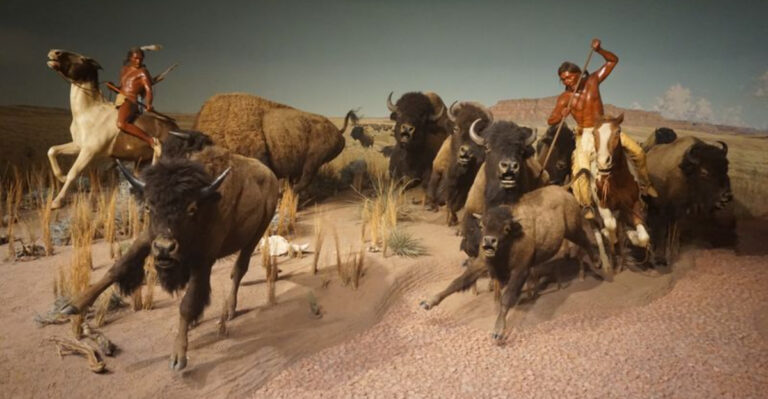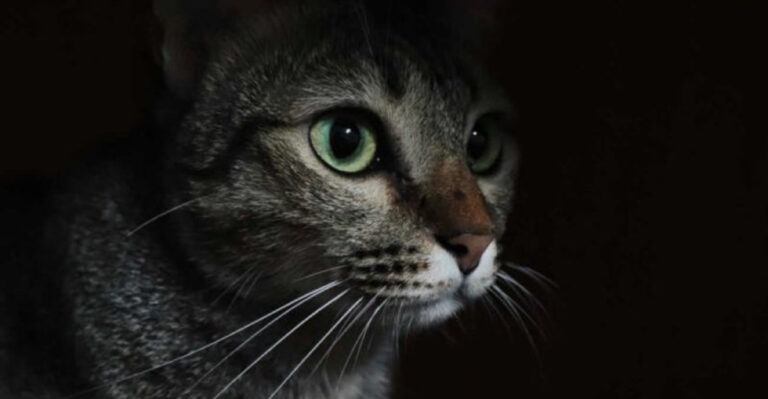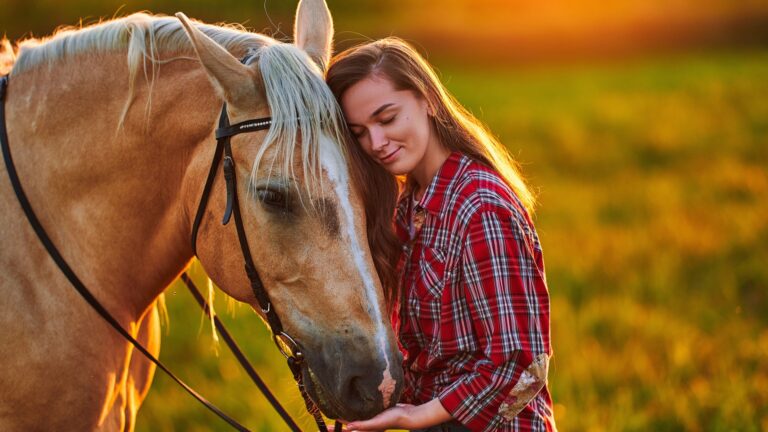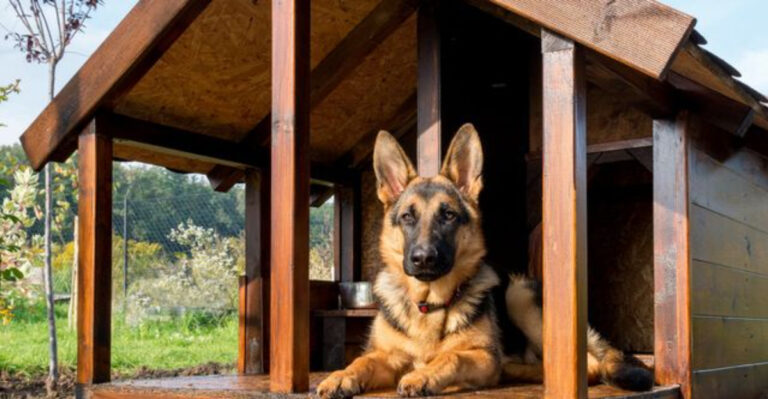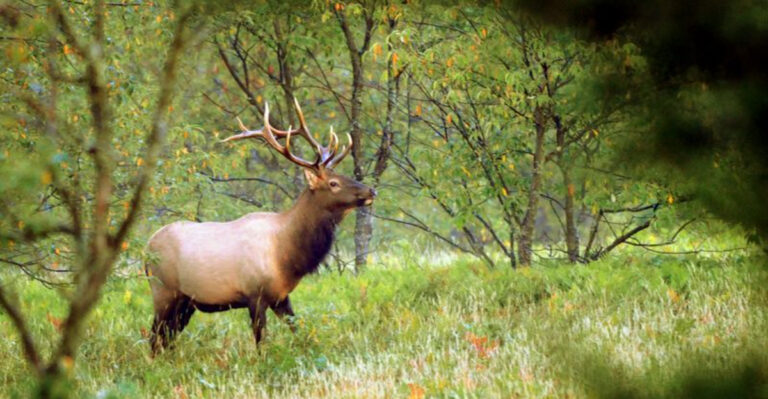15 Stunning Bird Species Unique To The Australian Skies
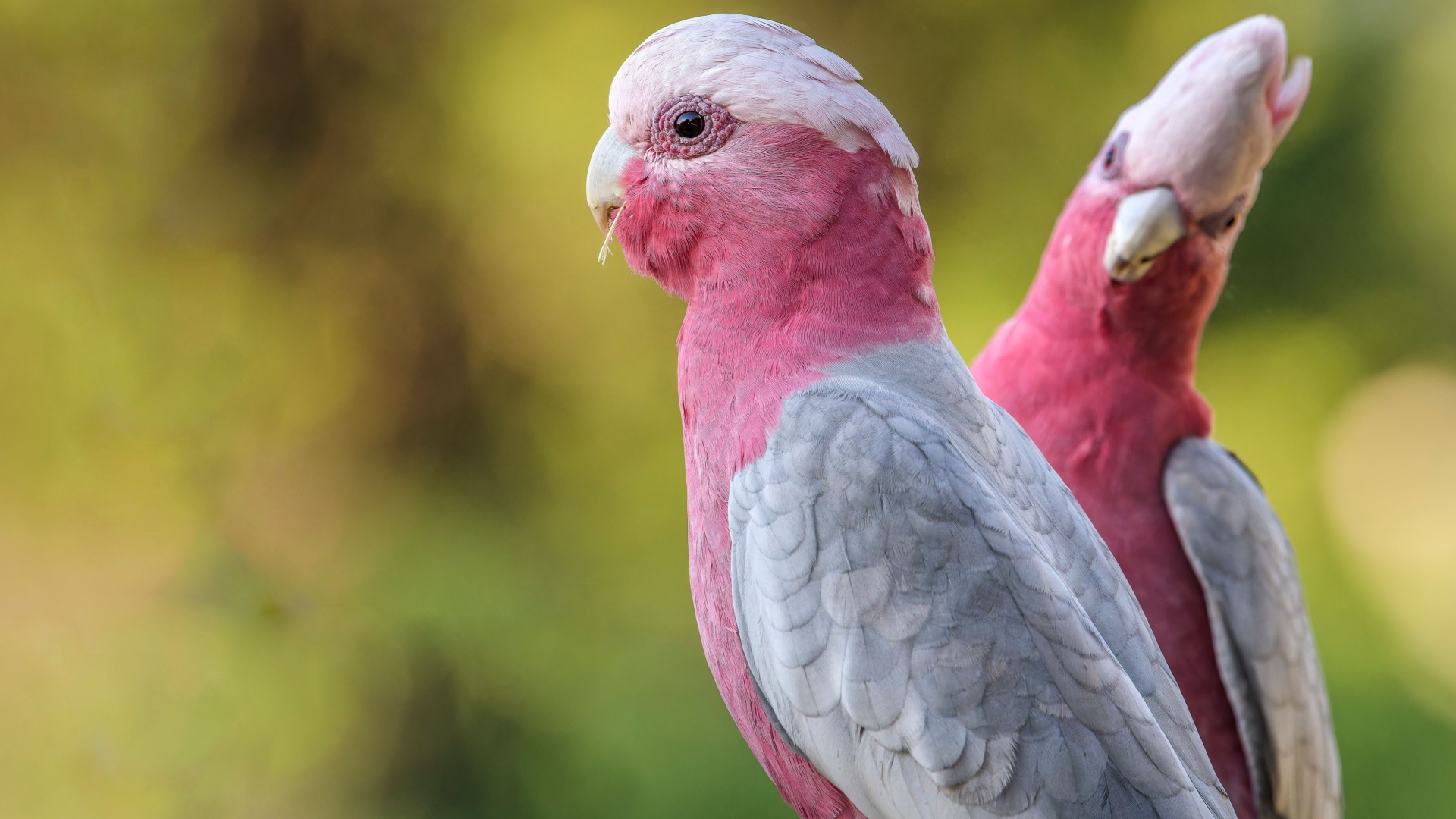
Ever wondered which bird species dominate the sky in the land down under?
Australia’s vast and diverse landscapes are home to some of the most mesmerizing and unique bird species that you won’t find anywhere else.
From the vibrant hues of the Rainbow Lorikeet to the majestic flight of the Wedge-tailed Eagle, join us as we explore these fascinating avian wonders. Each bird tells a story of adaptation and beauty, painting the Australian skies with their colors and songs.
1. Rainbow Lorikeet
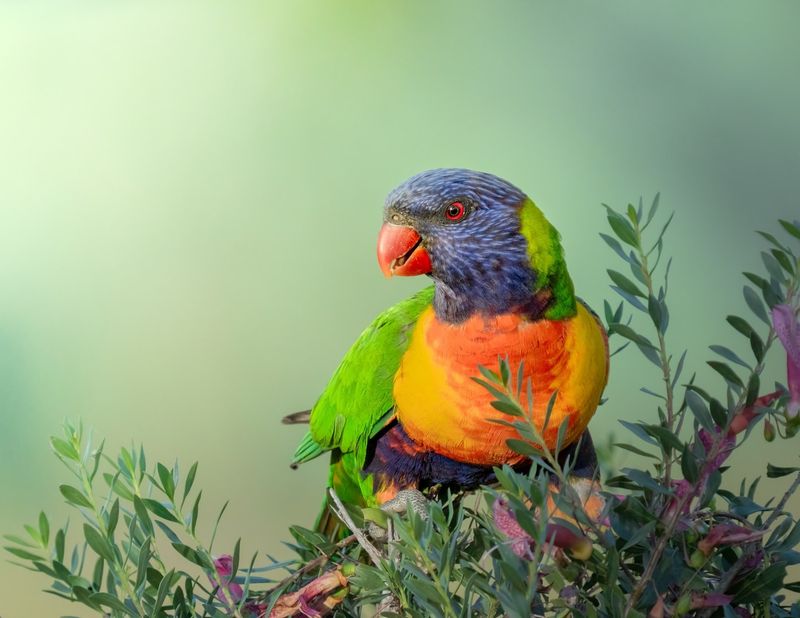
The Rainbow Lorikeet is a sight to behold, with its kaleidoscope of colors adorning the skies of Australia. Known for their vibrant plumage, these birds feature a stunning mix of blues, greens, yellows, and reds. When they take flight, it’s as if a piece of the rainbow has come to life.
Inhabiting coastal regions, they are often seen flitting between flowering trees and shrubs, drawn by the nectar. Their brush-tipped tongues are perfectly adapted for their diet, allowing them to feed on the sweet nectar of many native plants.
Social and noisy, Rainbow Lorikeets can often be spotted in large flocks, communicating with their high-pitched calls. Their playful behavior and bold nature make them favorites among birdwatchers and locals alike, adding a splash of color and life to the Australian landscape.
2. Superb Lyrebird
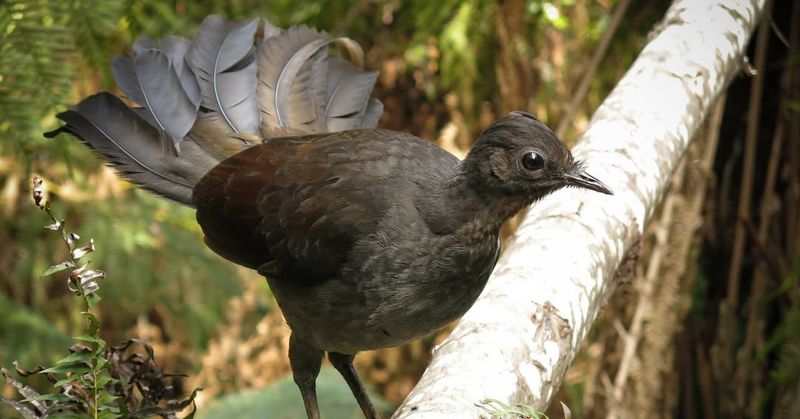
Imagine hearing a chainsaw in the forest, only to discover it’s a bird! The Superb Lyrebird is renowned for its incredible ability to mimic natural and artificial sounds. Found mainly in the rainforests of Victoria and New South Wales, these birds are masters of their habitat.
Their elaborate tail feathers, resembling a lyre, are a symbol of their grandeur. During mating displays, these feathers are showcased in a graceful dance that captivates both potential mates and any fortunate observer.
Despite their superb vocal capabilities, spotting a Lyrebird requires patience. These shy creatures blend seamlessly into their environment, often camouflaging among the underbrush. Their presence in the dense rainforests highlights the incredible diversity of Australia’s birdlife.
3. Kookaburra
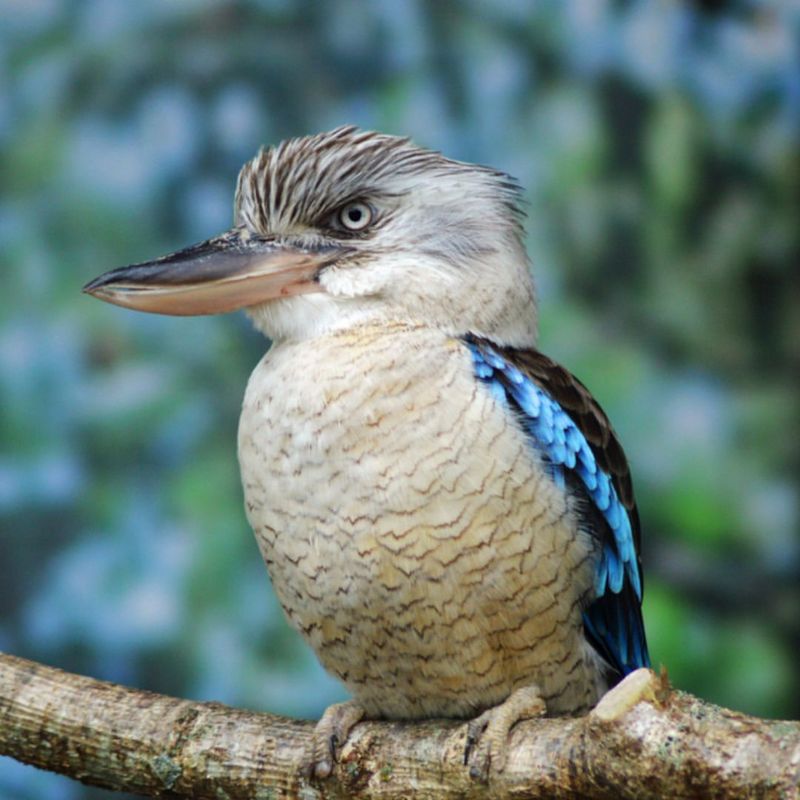
The call of the Laughing Kookaburra is an iconic sound of the Australian bush, often compared to echoing human laughter.
These birds, with their striking blue and white plumage, are more than just a pretty face in the forest. Known as the largest member of the kingfisher family, Kookaburras prefer habitats with plenty of trees, where they can perch and spot prey.
Their diet is diverse, ranging from insects to small reptiles, which they catch with precision. Despite their somewhat menacing hunting techniques, Kookaburras are beloved for their cheerful calls. Their presence is often welcomed as a reminder of the wild, untamed heart of Australia, echoing through the trees and bringing joy to all who hear them.
4. Emu
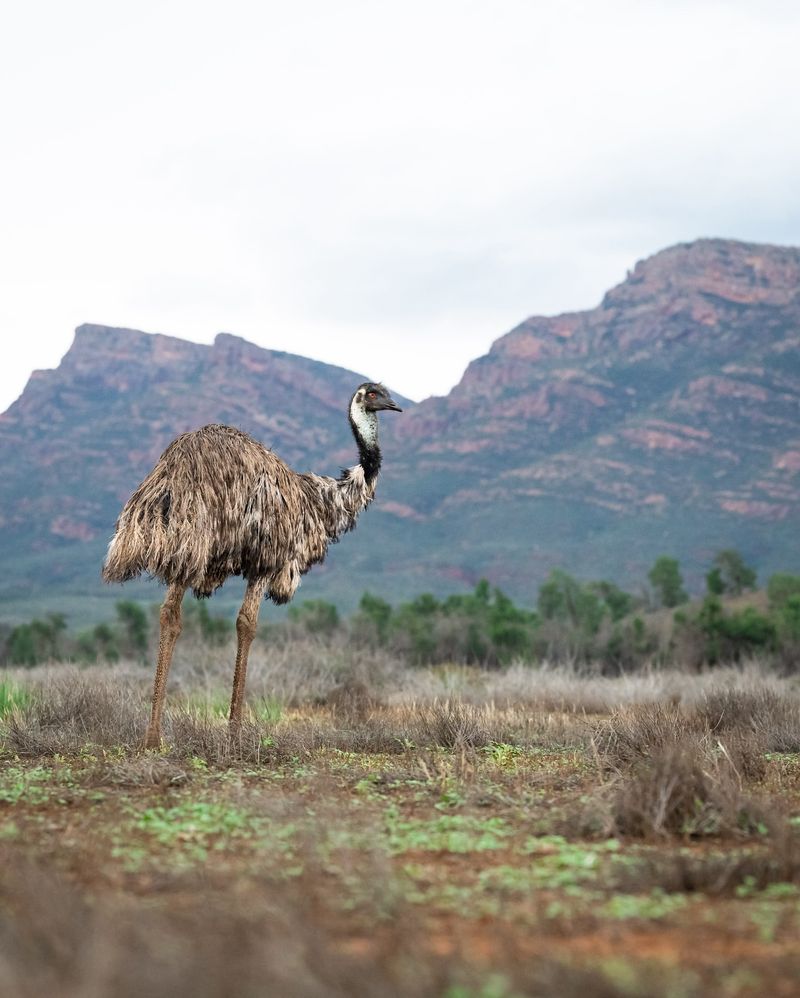
Second only in size to the ostrich, the Emu is a giant among Australian birds. These flightless creatures roam the open landscapes of the outback, characterized by their long legs and curious gaze. Emus are known for their incredible speed, reaching up to 50 km/h when sprinting.
This speed, combined with their endurance, allows them to traverse great distances in search of food and water. Despite their size, Emus are gentle giants, often seen in pairs or small groups. They symbolize the rugged resilience of the Australian wilderness, adapting to the harsh conditions of their environment with grace and ease.
5. Galah
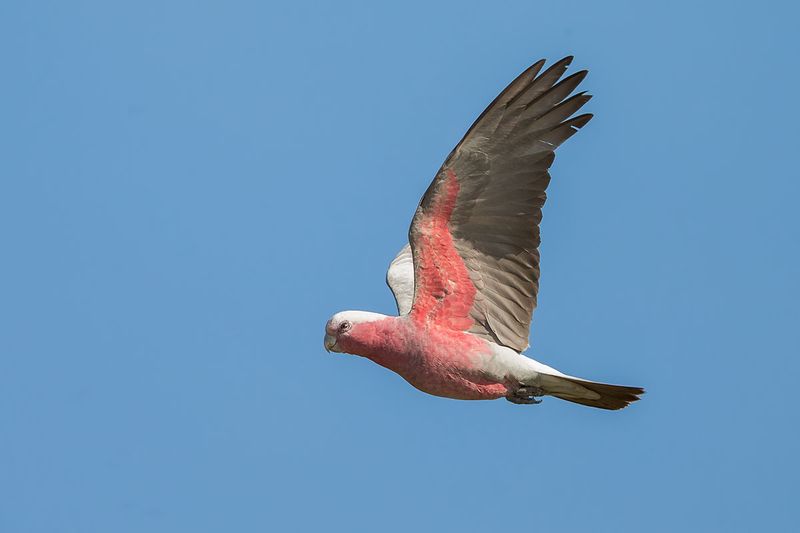
The Galah, with its distinctive pink and grey plumage, is a common sight across much of Australia. These social birds are often seen in flocks, adding a splash of color to the arid landscapes.
Known for their playful nature, Galahs are often observed doing acrobatics in the air and engaging in lively interactions with one another. Their social behavior extends to their feeding habits, where they forage together in groups, searching for seeds and nuts.
Galahs are not just about looks; they are intelligent birds capable of mimicking sounds and learning new tricks. Their adaptability to urban environments showcases their resilience and ability to thrive alongside human development.
6. Black Swan
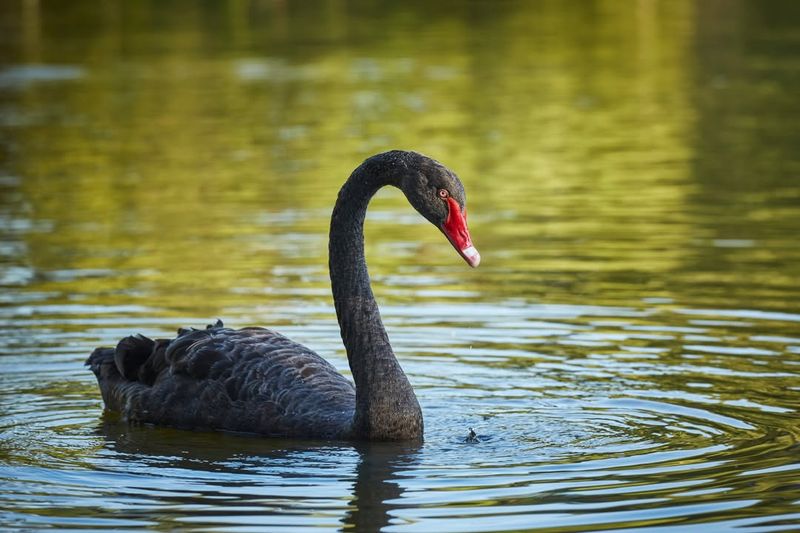
Grace personified, the Black Swan is one of Australia’s most elegant birds. Found in wetlands and rivers, these birds glide effortlessly across the water, their black plumage contrasting starkly against the shimmering waves.
Their red bills and striking appearance have made them symbols of beauty and mystery in various cultures. In Australia, they are part of many artistic and cultural references, often depicted in literature and art.
Despite their serene appearance, Black Swans are strong and territorial, especially during breeding season. They form monogamous pairs and are known for their long-term bondings, reinforcing their image as one of nature’s most loving couples.
7. Sulphur-Crested Cockatoo
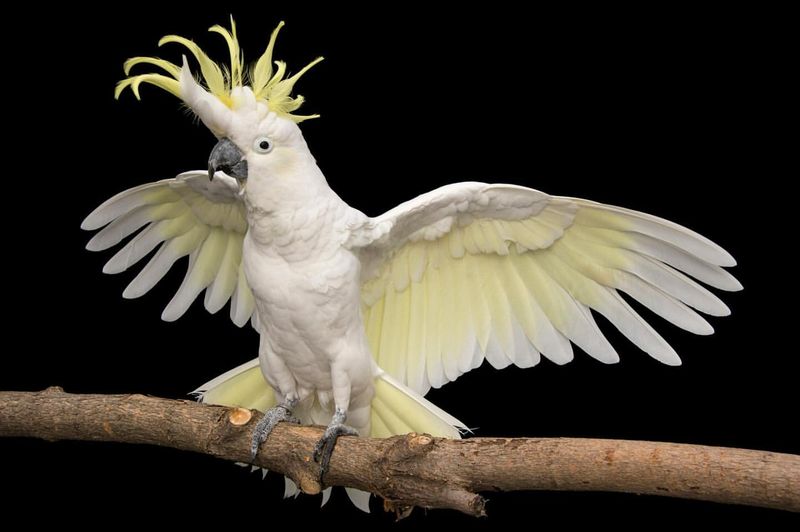
Sulphur-crested Cockatoos are a lively presence in the forests and urban areas of Australia. Recognizable by their bright white bodies and yellow crests, these birds are as bold as they are beautiful. Their raucous calls can be heard echoing through the trees, announcing their presence with confidence.
Highly intelligent, they are known to solve complex problems and are often seen playing with objects in their environment.
These cockatoos form strong social bonds and are often observed in large flocks. Their adaptability and intelligence have endeared them to many, making them a favorite among bird enthusiasts and a symbol of Australia’s vibrant wildlife.
8. Wedge-Tailed Eagle
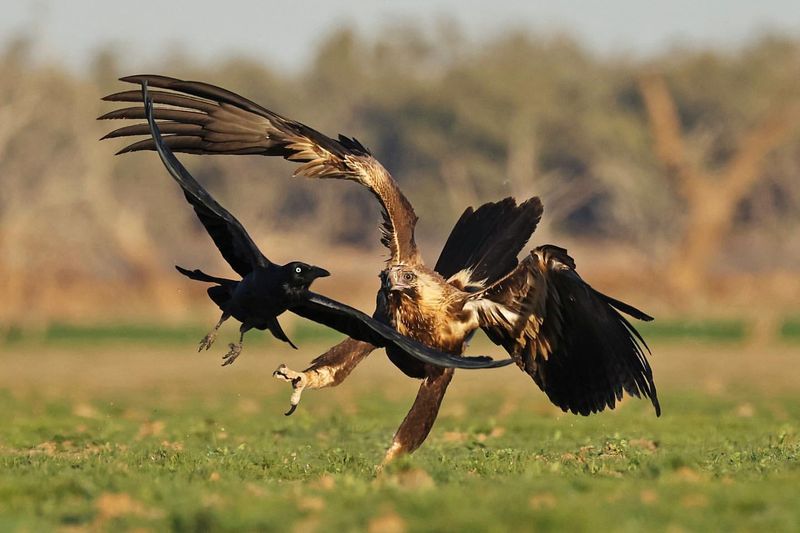
In the vast skies of Australia, the Wedge-tailed Eagle reigns supreme. As the largest bird of prey on the continent, it is both majestic and formidable, dominating the aerial landscape with its impressive wingspan.
These eagles are expert hunters, often seen gliding effortlessly in search of prey. Their keen eyesight allows them to spot potential food sources from great heights, showcasing their prowess as top predators.
Wedge-tailed Eagles are a symbol of power and freedom, revered by many Indigenous cultures. Their presence is a reminder of the untamed wildness of Australia’s outback, where they rule the skies with grace and strength.
9. Brolga
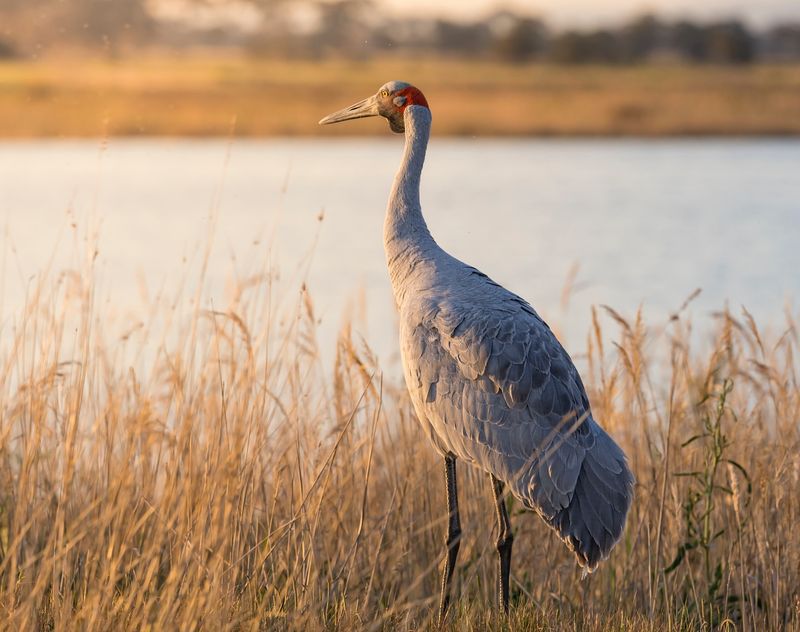
The Brolga is known for its distinctive dance, a spectacle that captivates anyone fortunate enough to witness it. Standing tall in the wetlands, these cranes are a blend of elegance and strength.
Their elaborate mating dance involves a series of leaps and calls, an ancient ritual that solidifies their pair bonds. Brolgas are highly social, often seen in flocks that travel together across the expansive landscapes.
Residing primarily in Northern Australia, Brolgas are a symbol of the connection between life and land. Their presence in the wetlands reflects the rich biodiversity of these vital ecosystems, highlighting their importance to Australia’s natural heritage.
10. Australian King Parrot
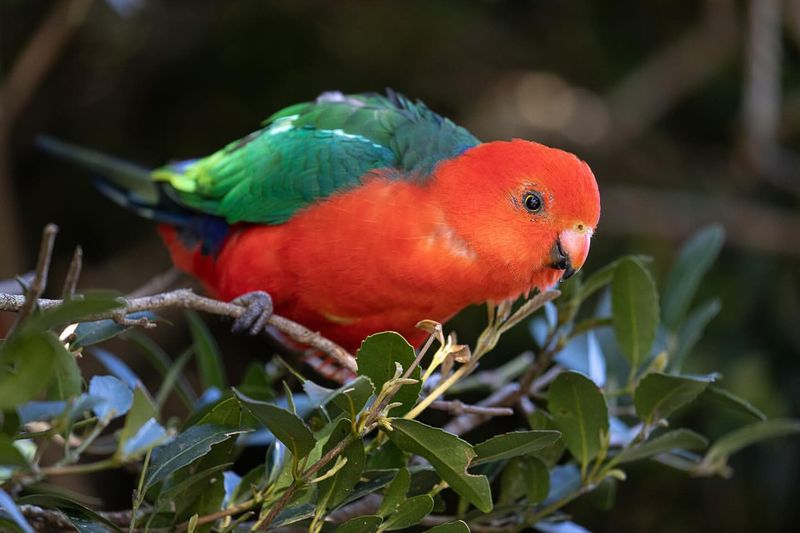
With their striking red heads and vibrant green bodies, Australian King Parrots are a true spectacle in the forest. These birds are a testament to the beauty and diversity of avian life in Australia. Found mainly in eastern and southeastern Australia, they are often spotted in rainforests and woodlands.
Their diet consists mostly of seeds and fruits, which they forage for with precision and skill. These parrots are relatively shy compared to other species, but their stunning appearance makes them a favorite among birdwatchers. Their presence in the dense foliage adds a splash of color, enhancing the natural beauty of their habitat.
11. Tawny Frogmouth
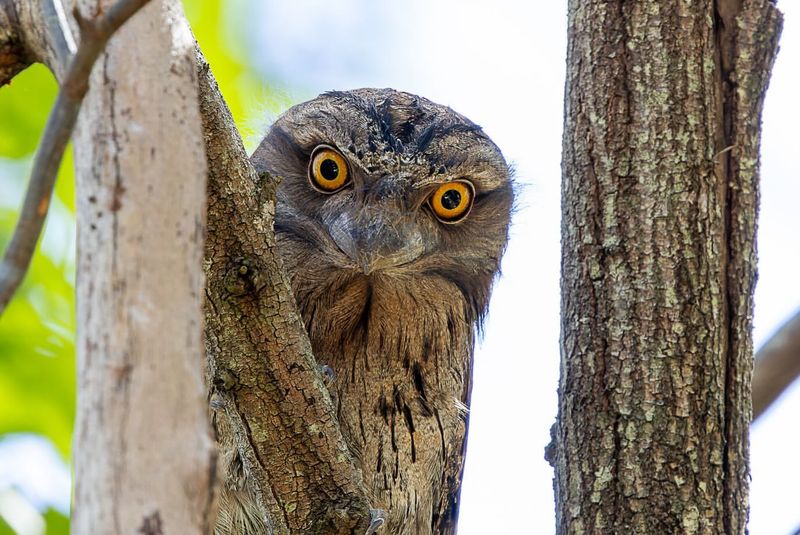
Masters of disguise, Tawny Frogmouths are often mistaken for tree branches due to their exceptional camouflage. These nocturnal birds are common throughout Australia, residing in forests and woodlands.
Their large eyes and wide mouths make them effective night hunters, feeding primarily on insects and small invertebrates.
During the day, they sit motionless, becoming virtually invisible to predators. Tawny Frogmouths hold a special place in Australian folklore, often symbolizing wisdom and stealth. Their unique appearance and mysterious nature continue to fascinate anyone lucky enough to glimpse them in their natural habitat.
12. Eclectus Parrot
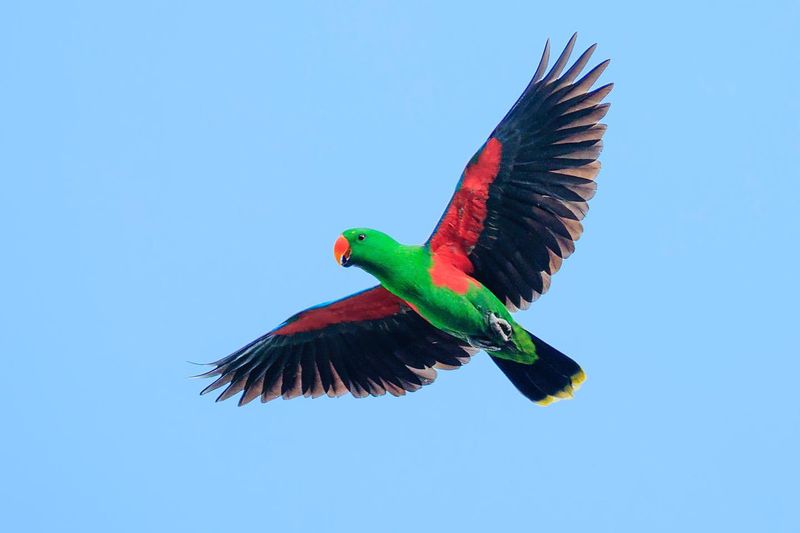
Eclectus Parrots are a vibrant spectacle with a unique twist: males and females have entirely different colorations. Males are bright green, while females boast an eye-catching red and purple coat. This sexual dimorphism is not just for show; it plays a role in their ecological niche and mating strategies.
Found in northeastern Australia, they thrive in rainforests where their colors serve both as camouflage and attraction.
These parrots are social creatures, known for their engaging personalities. Their ability to mimic sounds and words has made them popular pets, but their true beauty is best appreciated in the wild, where they add to the vibrant tapestry of the forest.
13. Cassowary
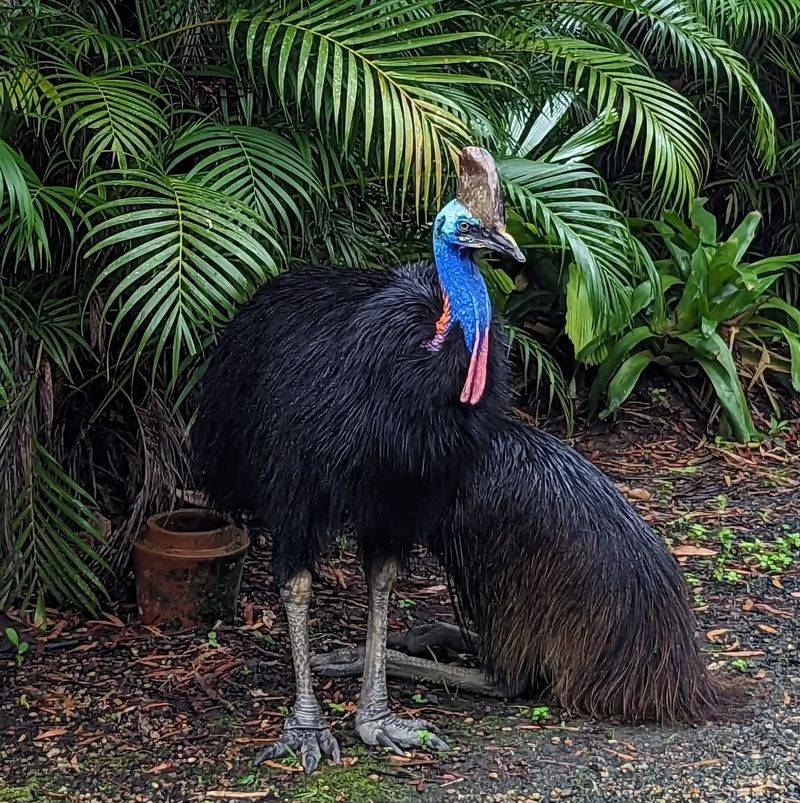
The Southern Cassowary is a striking presence in Australia’s tropical rainforests. Known for their impressive size and unique appearance, these flightless birds are both fascinating and formidable.
Cassowaries have a reputation for being solitary and territorial, often seen navigating the dense underbrush alone. Their helmet-like casque and vivid blue skin add an element of prehistoric mystery to their already imposing figure.
Despite their fearsome appearance, Cassowaries play a vital role in their ecosystem. They are key seed dispersers, aiding in the regeneration of the forest. Their presence is a testament to the incredible biodiversity of Australia’s rainforests, where ancient and modern mingle.
14. Fairy-Wren
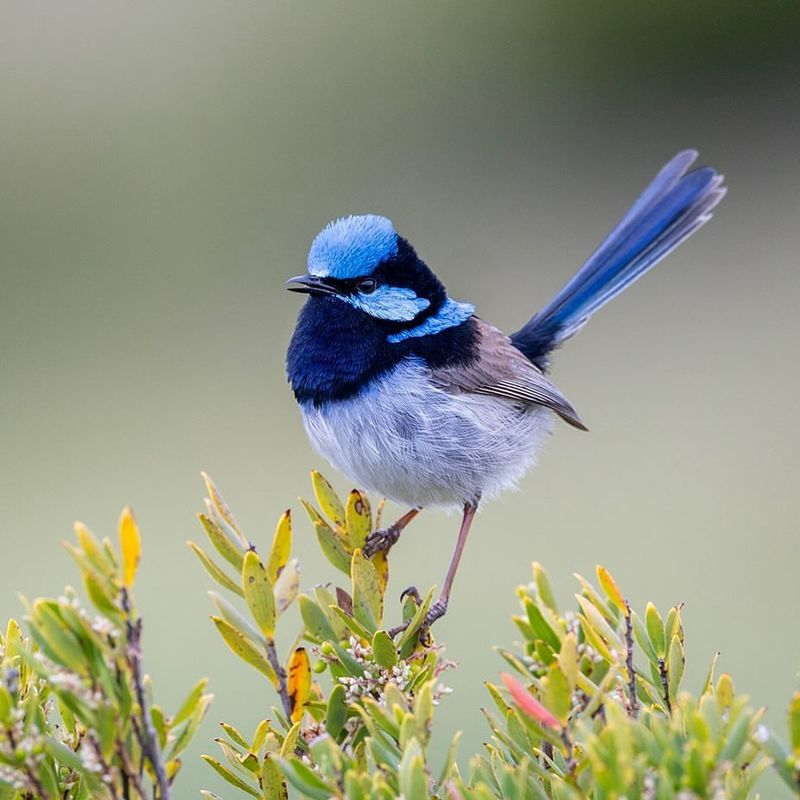
Superb Fairy-wrens are one of the most enchanting birds in Australia, with males sporting brilliant blue feathers that catch the eye. These small birds are lively and social, often seen flitting about in gardens and open woodlands.
Their vibrant coloration and energetic behavior make them a delight to observe. Despite their small size, they exhibit a complex social structure, often living in cooperative breeding groups.
Fairy-wrens are a symbol of joy and vitality, their cheerful presence brightening any landscape. They demonstrate the beauty and intricacy of Australia’s birdlife, thriving in both natural and urban settings.
15. Little Penguin
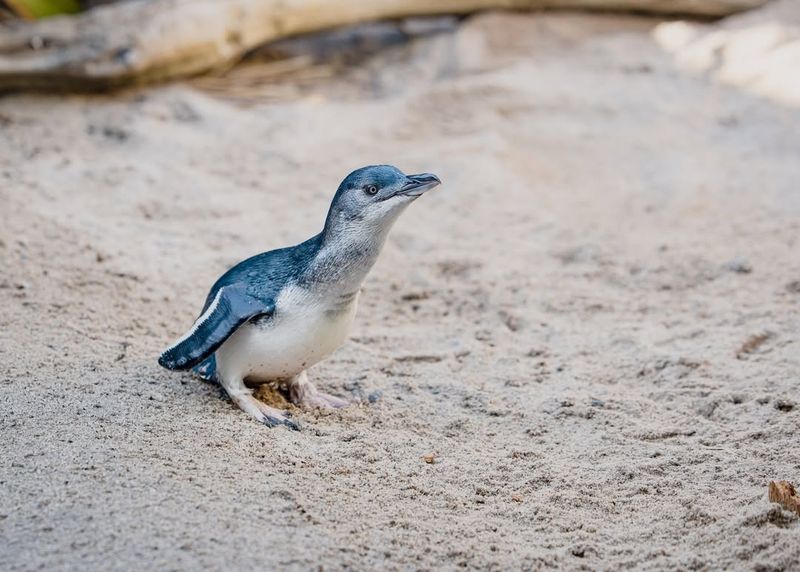
Little Penguins, also known as Fairy Penguins, are the smallest penguin species and a beloved symbol of Australia’s coastal regions. These endearing creatures are known for their nightly parades, where they return to shore after a day of fishing.
Their blue and white plumage provides perfect camouflage against the water, protecting them from predators. They are social animals, often seen in large colonies where they communicate with distinctive calls.
Observing a Little Penguin waddle along the beach is a magical experience, one that highlights the unique charm of Australia’s wildlife. Their presence along the southern coastlines is a reminder of the rich marine life that thrives in these waters.


